Advertisements
Advertisements
प्रश्न
India’s population as per 2011 census is:
विकल्प
1028 million
3287 million
3182 million
1210 million
उत्तर
1210 million
APPEARS IN
संबंधित प्रश्न
With the help of suitable diagram describe the logistic population growth curve.
List any three important characteristics of a population and explain.
What is ‘carrying capacity’ of a species in a habitat ? Why is logistic growth model considered more realistic?
If the birth rate is greater than the death rate then the population ______.
Give Geographical Reason.
The real progress of a country is understood with the help of the Human Development Index.
Identify the correct correlation :
A: Assertion; R: Reasoning
A: Population of a region does not change.
R: Birth rate, death rate, and migration affect the population of a region.
Give a geographical reason:
Population may increase though birth rates are low.
Assertion: Population of a region does not change.
Reason: Birth rate, death rate and migration affect the population of a region.
Differentiate between
Crude Birth Rate and Crude Death Rate
How long did the world take to increase its population from 5 billion to 6 billion?
Which country has the highest and lowest growth rate of the population respectively?
What is the impact of migration?
What is population growth? What does population change indicate for an area?
What are the components of population change?
Distinguish between the place of origin and the place of destination.
What is the trend in growth of population over the years in the world?
What was the population of India as per the 2011 Census?
In how many years India's population will be doubled?
What is the present annual growth rate of India?
The continent that has the lowest growth rate of population.
Population increased by the difference between births and deaths in a particular region between two points of time.
The country having lowest growth rate of population.
Which one of the following is not a component of population change?
What is the present growth rate of population in the world?
Which of the following is not a push factor for migration?
Which of these statements is not true?
Which of the following attributes has not been adversely affected by Age and Skill selective migration?

Which is not in stage III?
Study the given graph carefully and answer the following question:
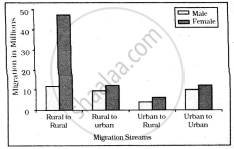
Intra-state Migration by place of Last Residence Indicating Migration Streams India, 2011
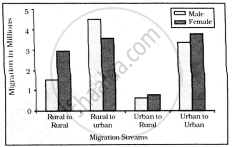
Inter-state Migration by Place of Last Residence Indicating Migration Streams India, 2011
Who dominates the inter-state migration of short distances?
In an exponential bacterial culture, the number of cells/ml is plotted o half log group. The growth is ______.
Crude Death Rate (CDR):-
Which of the following forms the component of a nation?
If a population of 50 Paramoecium present in a pool increases to 150 after an hour, what would be the growth rate of population?
Comment on the growth curve given below.
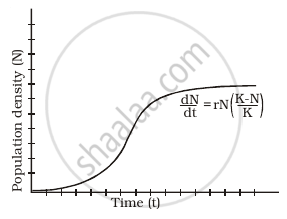
Which of the following may be interpreted as a spontaneous effort to achieve a better balance between population and resources?
When will be the growth of population positive in any place and in which one of the following conditions?
Analyse the main features of Phase-III (1951 - 81) of growth of population in India.
Assertion (A): Population of a region does not change.
Reasoning (R): Birth rate, death rate and migration affect the population of a region.
Which one of the following is the largest linguistic group of India?
Assertion (A): The population of a region does not change.
Reasoning (R): Birth rate, death rate and migration affect the population of a region.
A: Population of a region does not change.
R: Birth rate, death rate and migration affect the population of a region.
Assertion (A): Population of a region does not change.
Reason (R): Birth rate, death rate and migration affect the population of a region.
A: Assertion; R: Reasoning
A: The population of a region does not change.
R: Birth rate, death rate and migration affect the population of a region.
Assertion (A): Population of a region does not change.
Reasoning (R): Birth rate, death rate and migration affect the population of a region.
Assertion: Population of a region does not change.
Reason: Birth rate, death rate and migration affect the population of a region.
Assertion: Population of a region does not change.
Reason: Birth rate, death rate and migration affect the population of a region.
Study the two figures shown below that represent two growth models.
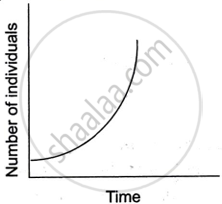 |
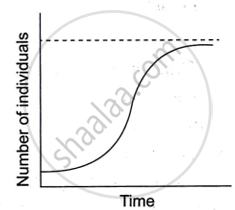 |
| Figure A | Figure B |
- Which one of the two figures represents an unlimited supply of nutrients? Give a reason.
- Which figure depicts a challenge to population growth?
- Explain the term reproductive fitness.
- Give the mathematical expressions for Figure A and Figure B.
Define the following term:
Growth rate of population
Assertion (A): Population of a region does not change.
Reasoning (R): Birth rate, death rate and migration affect the population of a region.
